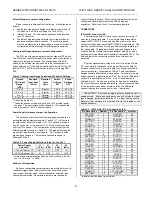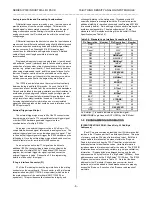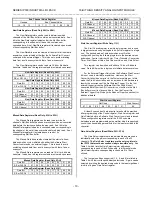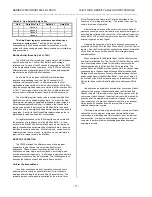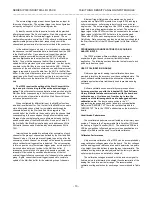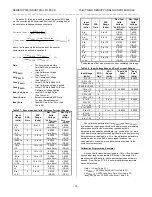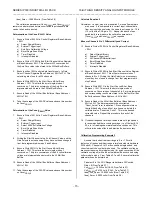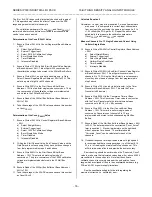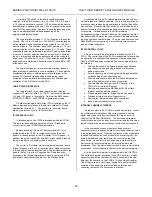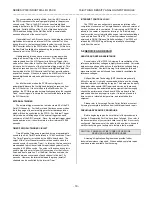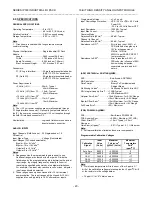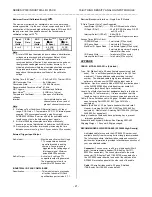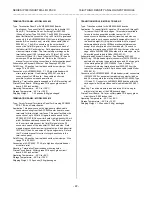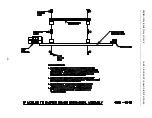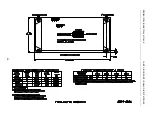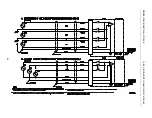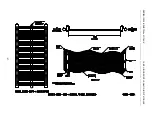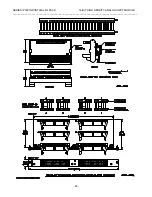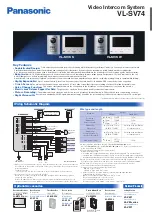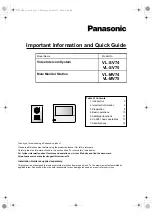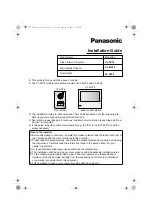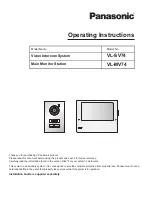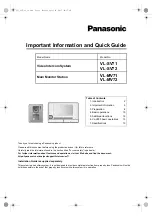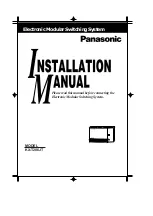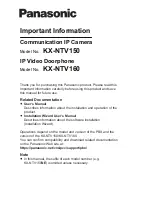
SERIES IP330 INDUSTRIAL I/O PACK 16-BIT HIGH DENSITY ANALOG INPUT MODULE
___________________________________________________________________________________________
- 19 -
The converted data serially shifted, from the A/D Converter to
the FPGA, represents the analog signal digitized in the previous
convert cycle. That is, the A/D Converter transfers digitized
analog input data to the FPGA one convert cycle after it has been
digitized. Serially shifting of the 16-bits of digitized data to the
FPGA and then writing to the Mail Box buffer is completed 8
µ
seconds after start of the convert cycle.
Upon initiation of an A/D convert cycle, the analog input data is
digitized and stored into an internal A/D Converter buffer. Also
during this cycle, the last converted data value is moved from the
A/D Converter buffer to the FPGA’s Mail Box Buffer. At this time,
the New Data Available bit corresponding the previous converted
channel is set in the FPGA register.
Understanding this sequence of events is important when
using the External Trigger Only scan mode. The first digitized
value received from the A/D Converter in External Trigger Only
mode will not be written to the Mail Box buffer if the Start Convert
bit is set prior to issuance of the first external trigger signal. This
first value received from the A/D Converter is digitized data that
has remained in the A/D Converter’s buffer from a previous data
acquisition session. Likewise, to update the Mail Box with the last
desired digitized data value one additional convert cycle is
required.
For all other scan modes the FPGA control logic will
automatically discard the first digitized data value received from
the A/D Converter. It is not written to the Mail Box buffer. In
addition, the FPGA logic also automatically generates the required
“flush” convert signals to obtain the last converted data value from
the A/D Converter.
EXTERNAL TRIGGER
The external trigger connection is made via pin 49 of the P2
Field I/O Connector. For the Burst and Continuous scan modes
the falling edge of the external trigger will start data acquisition
which will then be controlled by the FPGA. For External Trigger
Only mode, each falling edge of the external trigger causes a
conversion at the A/D Converter. Once the external trigger signal
has been driven low, it should remain low for minimum of 500n
seconds.
TIMED PERIODIC TRIGGER CIRCUIT
Timed Periodic Triggering is provided by two programmable
counters (an 8-bit Timer Prescaler and a 16-bit Conversion Timer).
The Timer Prescaler is clocked by the 8MHz. board clock. The
output of the Timer Prescaler counter is then used to clock the
second counter (Conversion Timer). In this way, the two counters
are cascaded to provide variable time periods anywhere from 8
µ
seconds to 2.0889 seconds. The output of the second counter is
used to trigger the start of new A/D conversions for the Uniform
Scan modes of operation. For the Burst Continuous mode, the
interval between conversions of each channel is fixed at 15
µ
seconds. However, the interval between the group (burst) of
channels can be controlled by the Interval Timer.
INTERRUPT CONTROL LOGIC
The IP330 can be configured to generate an interrupt after
completion of conversion of a single channel or after conversion of
a group of channels is completed. IP interrupt signal INTREQ0* is
issued to the carrier to request an interrupt. An 8-bit interrupt
service routine vector is provided during an interrupt acknowledge
cycle on data lines D0 to D7. The interrupt release mechanism
employed is ROAK (Release On AcKnowledge). The IP330 will
release the INTREQ0* signal during an interrupt acknowledge
cycle from the carrier.
5.0 SERVICE AND REPAIR
SERVICE AND REPAIR ASSISTANCE
Annual return of the IP330 to Acromag for recalibration of the
reference (calibration) voltages is highly recommended. Corrected
data accuracies depend heavily on the calibration voltages being
within specification. Contact Acromag for technical details and
procedures which can be followed to periodically recalibrate the
reference voltages.
Surface-Mounted Technology (SMT) boards are generally
difficult to repair. It is highly recommended that a non-functioning
board be returned to Acromag for repair. The board can be easily
damaged unless special SMT repair and service tools are used.
Further, Acromag has automated test equipment that thoroughly
checks the performance of each board. When a board is first
produced and when any repair is made, it is tested, placed in a
burn-in room at elevated temperature, and retested before
shipment.
Please refer to Acromag's Service Policy Bulletin or contact
Acromag for complete details on how to obtain parts and repair.
PRELIMINARY SERVICE PROCEDURE
Before beginning repair, be sure that all of the procedures in
Section 2, Preparation For Use, have been followed. Also, refer to
the documentation of your carrier board to verify that it is correctly
configured. Replacement of the module with one that is known to
work correctly is a good technique to isolate a faulty module.
CAUTION: POWER MUST BE TURNED OFF BEFORE
REMOVING OR INSERTING BOARDS
Acromag’s Applications Engineers can provide further
technical assistance if required. When needed, complete repair
services are also available from Acromag.

